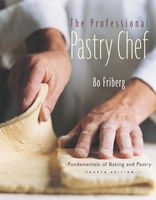Prue Leith's latest book is now on ckbk. Get 25% off ckbk Membership
Glucose
By Bo Friberg
Published 1989
Glucose, as it is used in the pastry kitchen, is a viscous, colorless syrup (about 44° Baumé) produced by partial hydrolytic decomposition, known as hydrolysis, which can be explained as the splitting of chemical bonds using water. The most common type is dextroglycose, mostly just called dextrose. It is made from the starch in potatoes, wheat, rice, or corn. Glucose plays an important role in the confectionery industry, where its stabilizing effect is used to help prevent recrystallization when sugar is boiled to high temperatures, such as for cast, pulled, and blown sugar; glucose also makes boiled sugar more elastic. More than half of the glucose manufactured is used by the confectionery industry. Glucose should not be stored at temperatures above 68°F(20°C) because it will change from transparent to pale yellow in color. In most instances, glucose can be replaced with light corn syrup.
Become a Premium Member to access this page
Unlimited, ad-free access to hundreds of the world’s best cookbooks
Over 150,000 recipes with thousands more added every month
Recommended by leading chefs and food writers
Powerful search filters to match your tastes
Create collections and add reviews or private notes to any recipe
Swipe to browse each cookbook from cover-to-cover
Manage your subscription via the My Membership page
Part of
Advertisement
Related Recipes
-
-
-
-
Related Reference
-
-
-
-
Advertisement



